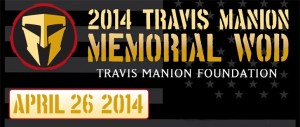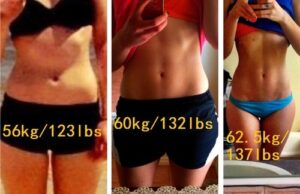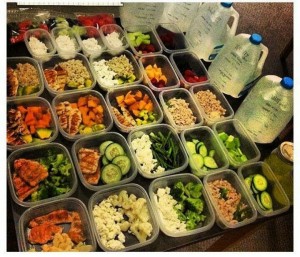
Paleo Nick’s Paleo Bank Account.
In the previous posts, we discussed “What is Clean Eating?” and we decided that Paleo Zone is among the best diet prescriptions currently on the market, especially for a Crossfitter. Paleo tells us what to eat, and Zone tells us how much to eat. Now, we’ll talk practicalities.
There are a lot of routes to clean eating, but I’m going to share with you what I believe to be the easiest, simplest, cheapest, and least time consuming method. Here are seven lessons that I have learned the hard way. They center around choosing quality ingredients, being organized, cooking in bulk, and the use of freezer meals.
1) A failure to plan is a plan to fail! Eating clean will not happen on accident. Just embrace that this requires a little bit of leg work in the beginning, but it will pay off in the end. You’ll plan & cook your meals in advance.
2) There’s a fair bit of investment on the front end. However, it is not very expensive in the long run. If you decide to start eating paleo, you’ll spend about $60 in that first grocery trip on staples (coconut oil, key spices, etc.) After that, you can easily feed yourself for $3/meal or less! Much cheaper than eating out! You can also keep paleo from becoming too expensive by following these guidelines.
3) Cooking in bulk does not mean eating the same thing ad nauseum. We’re big supporters of making a ton of food at once, and then eating it throughout the week. I love the Paleo Nick concept of the “paleo bank account”. The PBA is the stash of paleo meals you keep in your freezer. Cook 6 pounds of meat at once, and you have twelve portions. Eat two portions this week, and put the other ten portions in the paleo bank account. Sometimes you make big deposits into the paleo bank account/freezer, and some weeks are busy and you make a lot of withdrawals. Read more about it here.
4) Cook simple meals. These won’t be fancy or rely on your fine culinary skills. They will, however, give you adequate protein & veggie intake, and they’ll still be delicious. There is a time and place to make more complicated meals, but your average work week is likely not one of them.
5) When cooking in bulk, choose meals based on the ingredients and/or preparation method.
Ingredients: You want each meal to be balanced. So, for each meal you’ll pick your protein source, your carb source, and your fat source. Try to get a variety of protein sources (beef, chicken, seafood, etc), a lot of quality veggies (brussels sprouts, kale, spinach, broccoli, etc.) and some dense carbs if it’s a heavy training day (sweet potato, acorn squash, apples, etc). For fat, it’s often easiest to eat a few almonds, some guacamole, or some extra olive oil on your veggies. If you want to really dial this in, calculate and use your Zone blocks. If you’d prefer the easier, albiet less precise method, you can use your hands to measure.
Preparation Method: The lowest time commitment method is to pick recipes that can be cooked all at once. For many people, that looks like one crockpot meal, two or three one-pot meals (stews, chilis, etc), and two in-the-oven meals. These are all low maintenance meals, so you can easily prep for one meal while the others are cooking. Unless you have a double oven (lucky you!) you may want to save your veggies for last and let them cook while you clean up and put your proteins in their storage containers. Rubbing some oil and seasonings on those veggies and letting them roast in the oven is a simple & tasty method.
6) Get into a routine & choose an organization method for recipes. Picking recipes can be a drag if you’re not organized. Here’s how I do it: I store all of my recipes in a Google Drive folder (copy and paste each recipe into it’s own document from food blogs or re-type from recipe books) divided into folders by protein source. I love this method because I can easily search for what I want. Tonight, I typed in “chicken” and “crockpot” and nine potential recipes pop up. I give a “star” to recipes that I really love and want to repeat. I’ve found this to be infinitely easier than keeping a bunch of cook books around or a mess of links in my favorites tab online. In order to really experience the fruits of this system, you’ll need to know of a few recipes first! Thankfully, paleo has become very popular and there are many great food blogs to choose from. When you come across a good one, simply paste it into a Google Drive document. This method can be used with Dropbox, Evernote, etc. I find this method easy because I can access Drive on all of my devices, it’s easy to edit recipes, and it’s easy to search. Regardless of the method you choose, it’s somewhat essential that you systematize this and make it part of your weekly routine.
7) Find a way to enjoy cooking. Personally, I load up a bunch of podcasts and then go to work. I also try to cook with friends as often as possible. And sometimes, just sometimes, I’ll have a glass of not-so-paleo wine while I cook. Make your food prep time enjoyable, and you’ll want to continue the habit.
Want to start using this system, but you want a little boost? Check out the next post, which includes a potential week of meals.
Want links to all posts so far in this series?
EDCF Nutrition Part1 : Let’s Define “Clean Eating”
EDCF Nutrition Part 2: Paleo Zone is the Way to Go!
EDCF Nutrition Part 3: The Easiest Path to Paleo Zone
EDCF Nutrition Part 4: One Week of Meal Prep
 It’s been a few months since Barbells & Handlebars, so I bet a few of you are getting antsy for a big event style WOD! Our very own Nicole Unger is leading the way by creating an EDCF team for a Hero WOD! Check out the details below, and sign up via the link at the bottom of this post!
It’s been a few months since Barbells & Handlebars, so I bet a few of you are getting antsy for a big event style WOD! Our very own Nicole Unger is leading the way by creating an EDCF team for a Hero WOD! Check out the details below, and sign up via the link at the bottom of this post!





